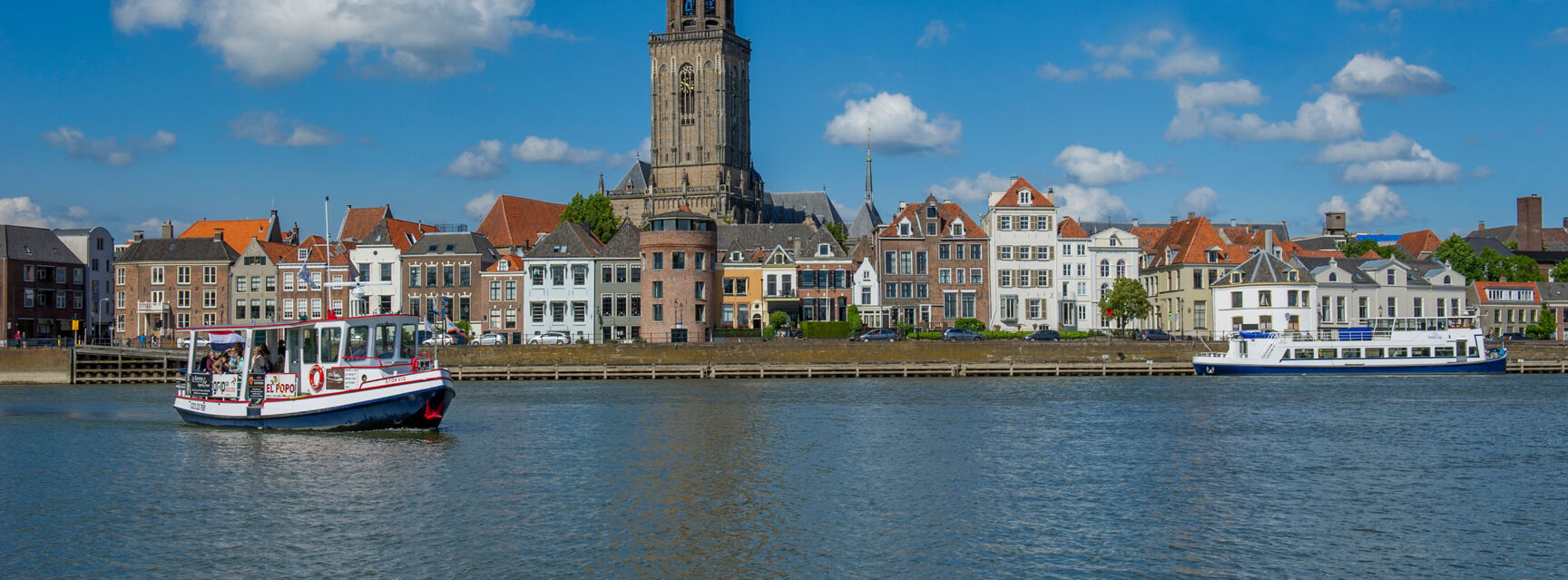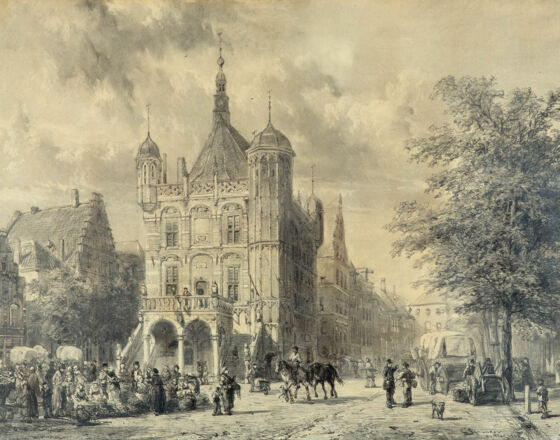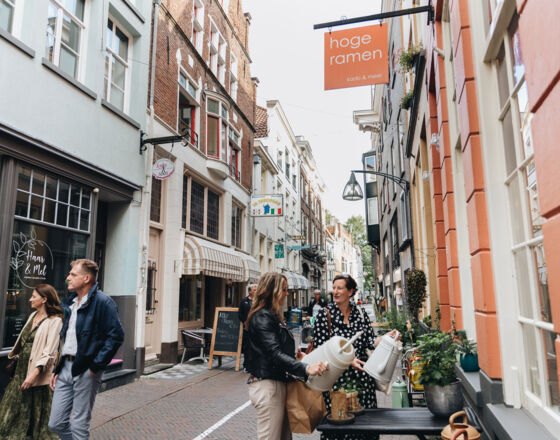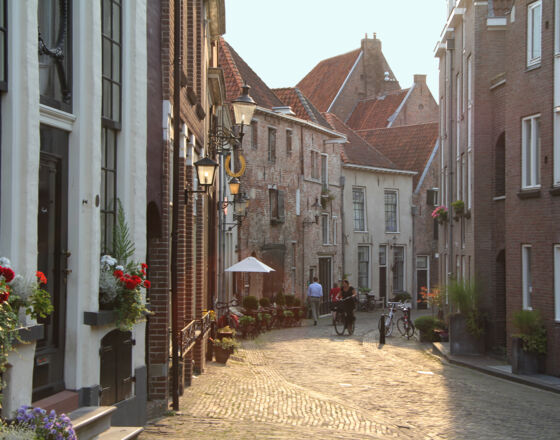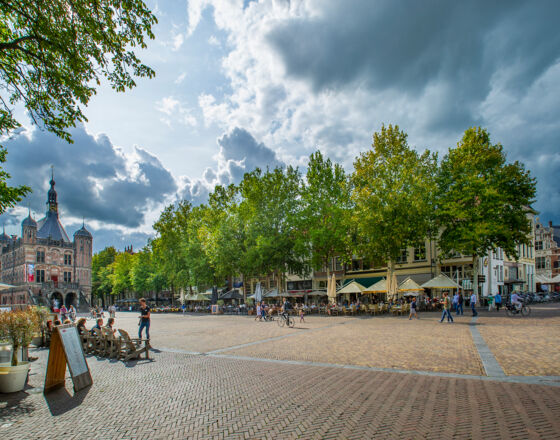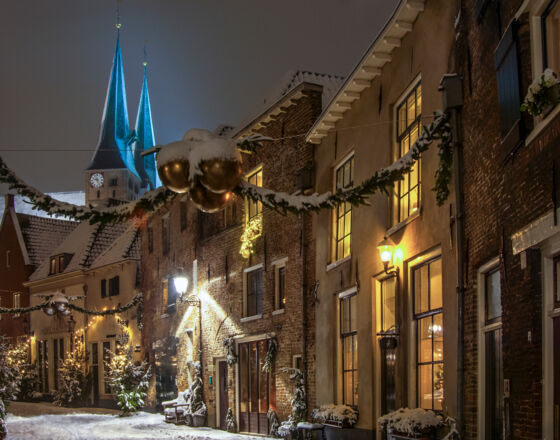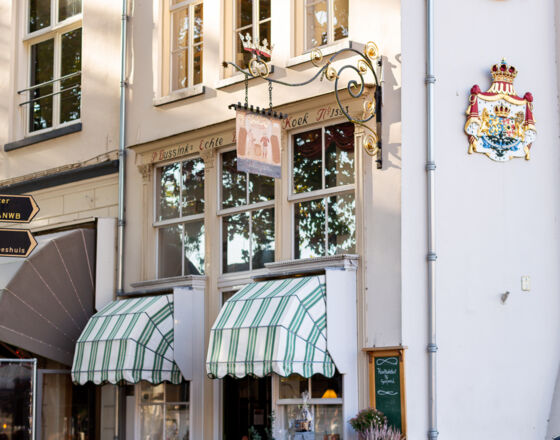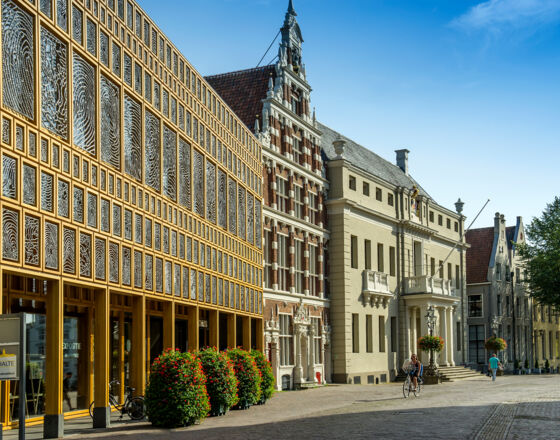Highlights
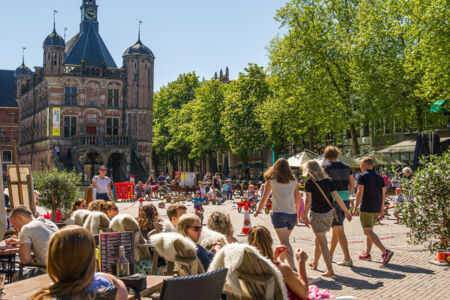
Brink
This square is the old trading heart of the city, and in the Middle Ages one of the largest market squares in the northern Netherlands. The word 'Brink' means 'open space in the built-up area', but also 'edge'. The southern part of the Brink formed the end (the edge) of the old city until the 13th century. With the further expansion of the city, it was not possible to build on the ground of the present Brink, because it was too swampy. The construction took place in the higher situated Bergkwartier (Berg Quarter). In this way a large square was created, which during the Middle Ages was mainly used as a market square for daily and weekly markets and for five large annual markets. De Brink was completely redecorated in 1993, and is now one of the most beautiful squares in the Netherlands. 2.1 million bricks were used to complete the design 'Cut Cakes' by architect A.H.M. Trompert.
Read more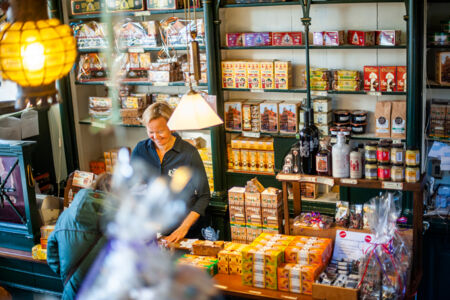
Deventer Koekwinkel (Cake Shop)
Of all the bakers in Deventer there is only one left: Jb. Bussink. Deventer has enjoyed international fame for its honey cake since the beginning of the 15th century. The honey cake was a popular product because of its long shelf life and could therefore be shipped frequently, first by the Hanseatic League and later worldwide by the VOC. There are many objects in the Deventer Koekwinkel (Cake Shop) that remind of the rich cake history of Deventer.
Read more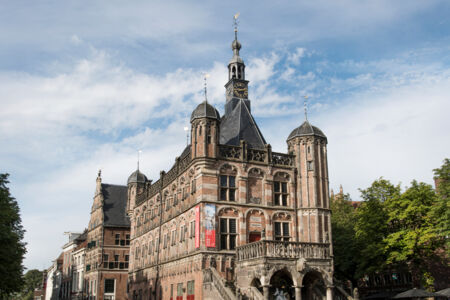
De Waag (The Weigh house) - Brink 56
De Waag (The Weigh house) dates back to 1528 and is the oldest weigh house in the Netherlands. The late Gothic building was largely built of stones from two Gelderland forts that had threatened the city from the other side of the IJssel for years. It became the symbol of urban independence and pride. De Waag was very important for trade. Merchants had to weigh their goods here under the supervision of the city government. Excise duties and weigh-in fees generated a lot of income for the city. The building now houses Museum De Waag.
Read more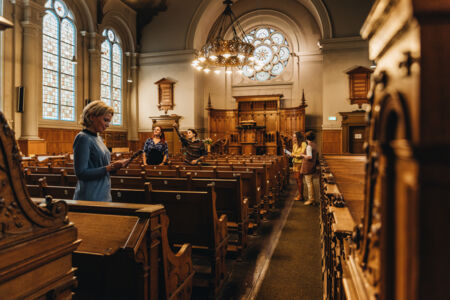
Penninckshuis (Penninck house)
This lavish facade with statues is one of the highlights of the Renaissance in the Netherlands. Around 1588, Herman Penninck commissioned the construction of this gable, which was to reflect his wealth and literacy. As a Hanseatic merchant, he traded mainly in cloth and had acquired a prominent and prosperous position. The statues represent the virtues: Faith, Hope, Love, Caution, Power and Sobriety. The building is the only private residence in the Netherlands to which a so-called virtues programme has been applied. Today, the VVV is located in the church. You can easily walk in to have a look.
Read moreContact
Deventer Marketing
Brink 89
7411 BX
info@deventermarketing.nl
+31-(0)570-745630
Travel options
Deventer is easily accessible by car via the A1 motorway.
Deventer is centrally located on the rail connections between Amsterdam/Rotterdam and the east of the Netherlands or Germany and on the Zwolle-Arnhem/Nijmegen line. Deventer is therefore easily accessible by public transport, from the NS and bus station it is a 5 minute walk to the center.

